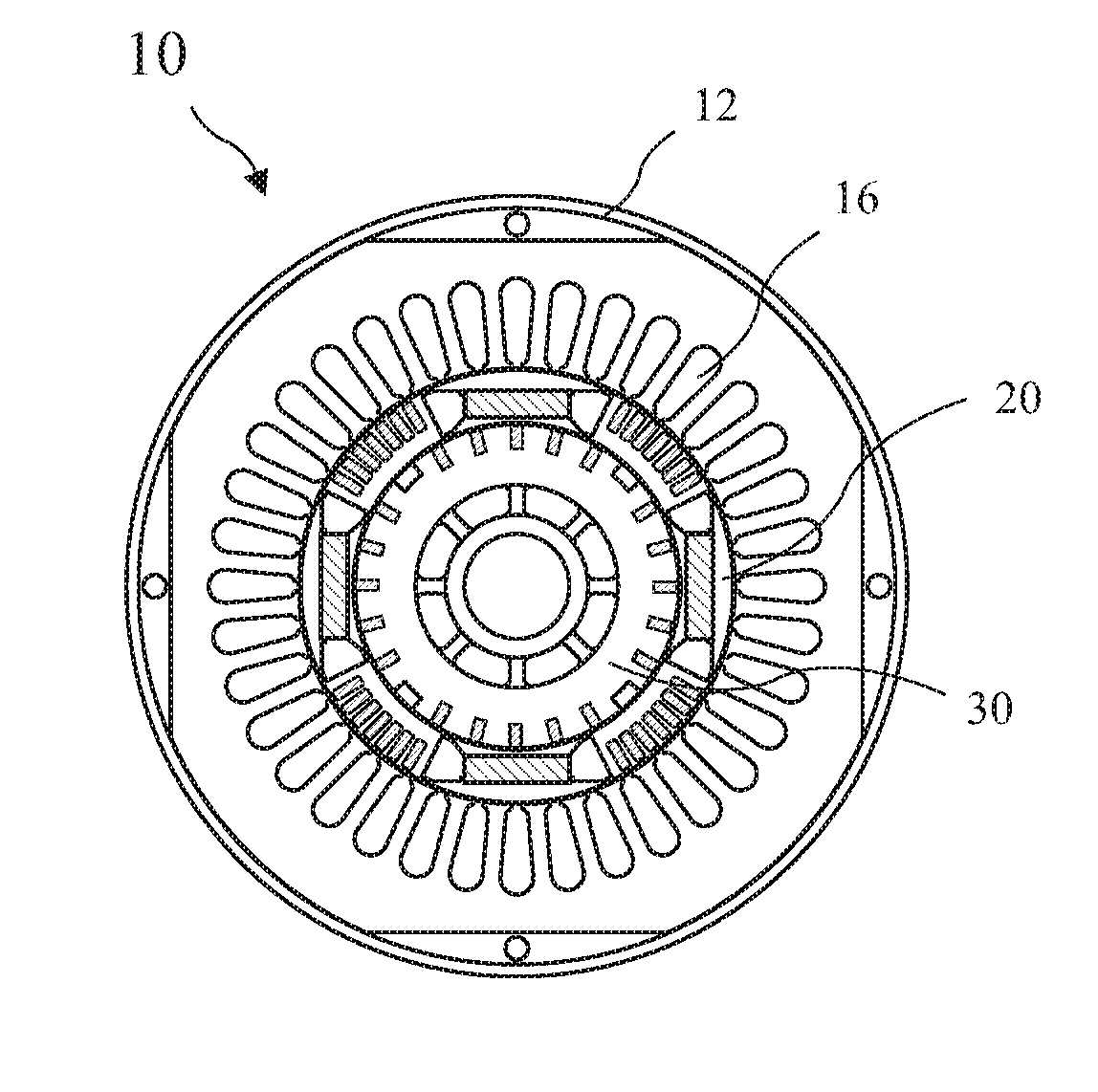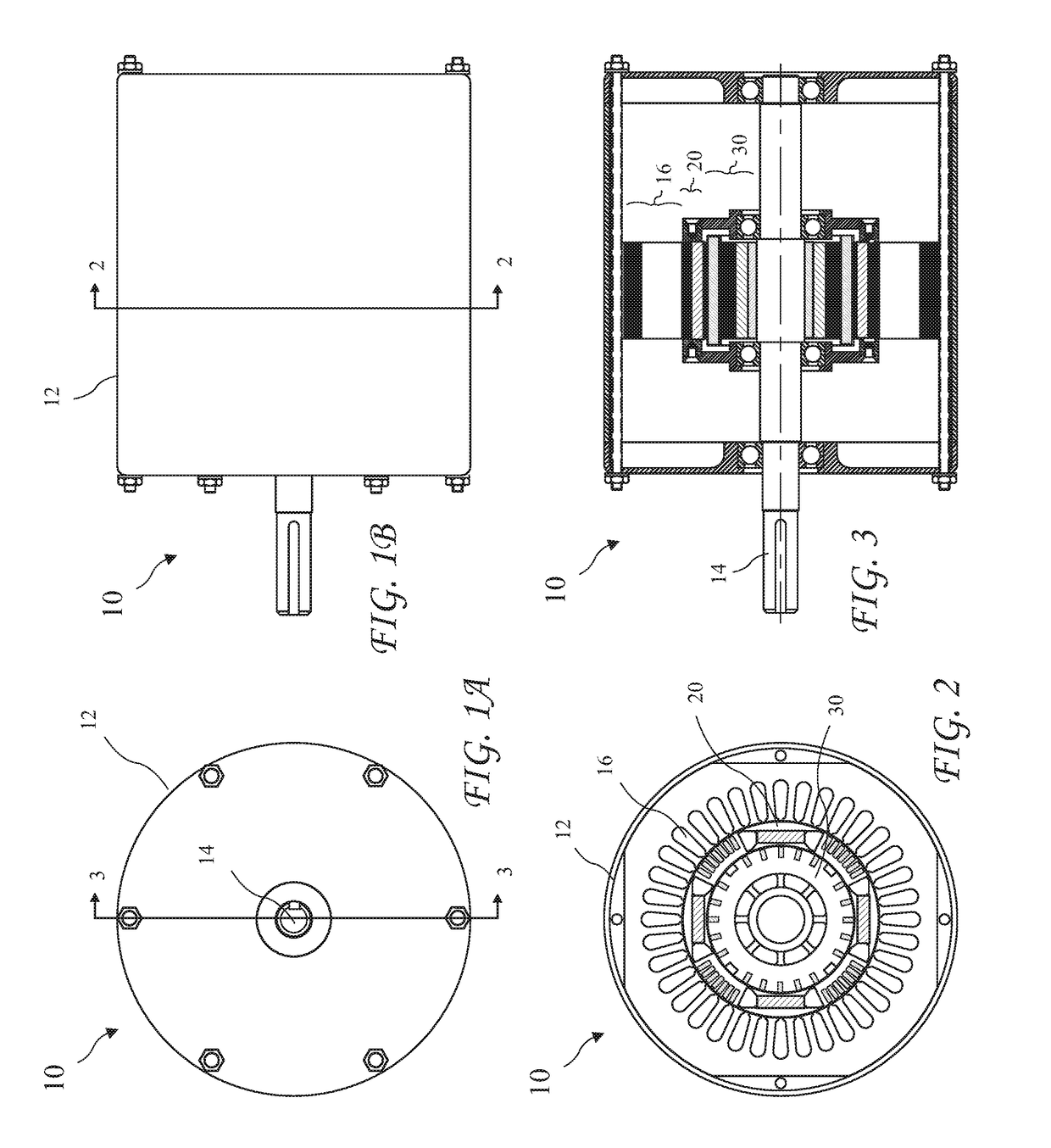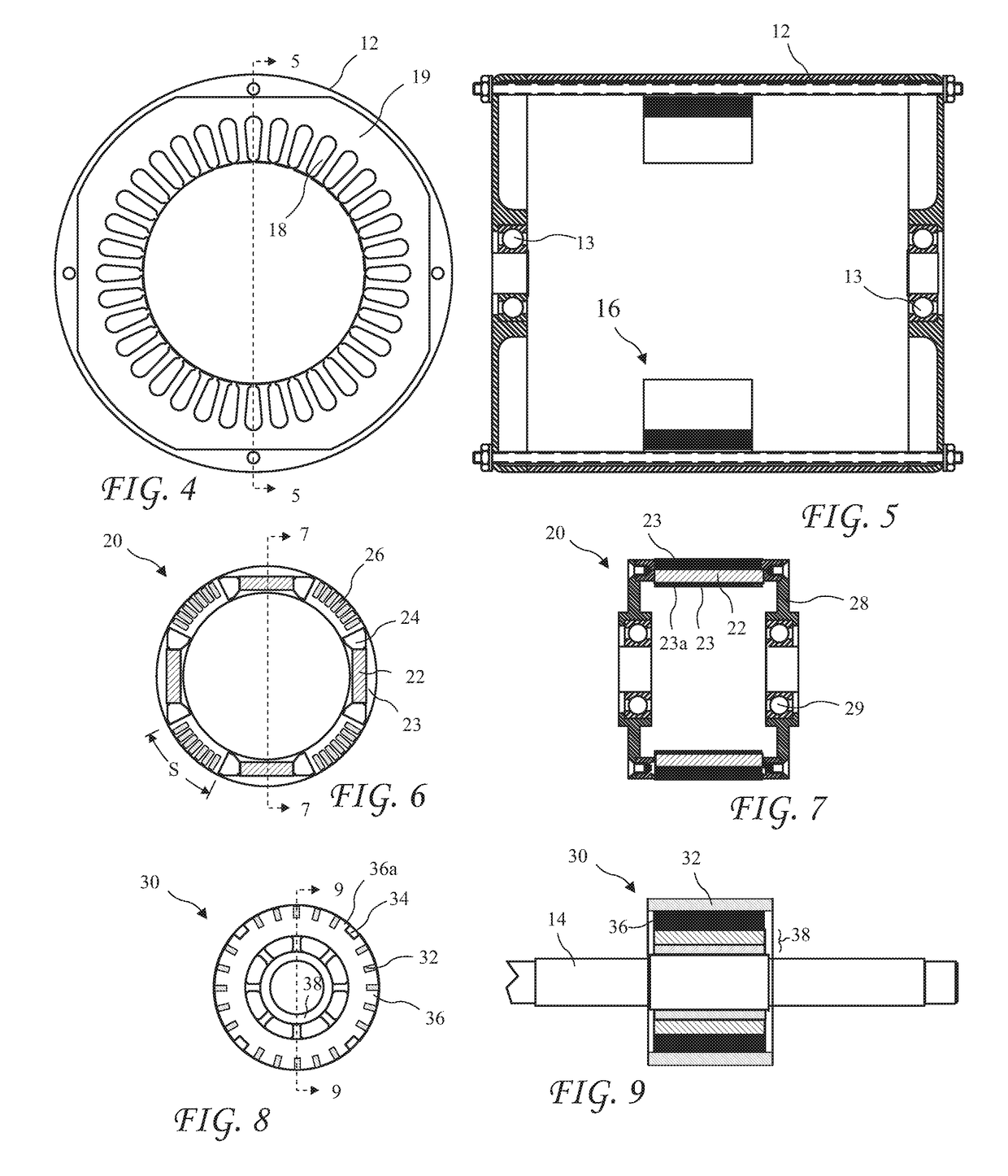Hybrid Electric Motor with Self Aligning Permanent Magnet and Squirrel Cage Rotors
a permanent magnet, hybrid technology, applied in the direction of dynamo-electric machines, magnetic circuit rotating parts, magnetic circuit shapes/forms/construction, etc., can solve the problems of low-power induction motors that are not highly efficient at designed operating speed, permanent magnets that create transient breaking torque, undesirable anomalies, etc., to improve the sequence of inductive startup and efficient synchronous operation
- Summary
- Abstract
- Description
- Claims
- Application Information
AI Technical Summary
Benefits of technology
Problems solved by technology
Method used
Image
Examples
third embodiment
[0105]A cross-sectional view of the electric motor 10b having third embodiment of the independently rotating HPMSC outer rotor 20b and the SC inner rotor 30b fixedly coupled to a motor shaft taken along line 2-2 of FIG. 1B, is shown in FIG. 14 and a cross-sectional view of the electric motor 10b taken along line 3-3 of FIG. 1A, is shown in FIG. 15. The SC inner rotor 30b does not include the slots 34 of the SC inner rotor 30.
second embodiment
[0106]A cross-sectional view of the independently rotating HPMSC outer rotor 20a taken along line 2-2 of FIG. 1B, is shown in FIG. 16 and a cross-sectional view of the rotor 20a taken along line 17-17 of FIG. 16, is shown in FIG. 17. The HPMSC outer rotor 20a includes four bars 26 between consecutive magnets 22.
[0107]A cross-sectional view of the third embodiment of the independently rotating HPMSC outer rotor 20b taken along line 2-2 of FIG. 1B, is shown in FIG. 18 and a cross-sectional view of the HPMSC outer rotor 20b taken along line 19-19 of FIG. 18, is shown in FIG. 19. The HPMSC outer rotor 20b includes five bars 26 between consecutive magnets 22.
[0108]A cross-sectional view of the second embodiment of the electric motor 10a showing magnetic field lines 40a and 42a at startup taken along line 2-2 of FIG. 1B, is shown in FIG. 20 and a cross-sectional view of the electric motor 10a showing magnetic field lines 52a at synchronous speed taken along line 2-2 of FIG. 1B, is shown i...
first embodiment
[0110]the invention thus discloses a clutch-less hybrid squirrel cage / permanent magnet motor comprising:
[0111]a motor housing;
[0112]a stator fixed to the motor housing and producing a rotating stator magnetic field;
[0113]a motor shaft rotatably connected to the motor housing and extending from at least one end of the motor housing for attachment to a load;
[0114]a hybrid squirrel cage / permanent magnet rotor residing coaxial with the motor shaft and having a first rotor core, a number N of angularly spaced apart permanent magnets embedded in the rotor core, non-ferrous gaps in the rotor core present at ends of each permanent magnet, and first bars embedded in the rotor core, the hybrid squirrel cage / permanent magnet rotor capable of rotating independently of the motor shaft; and
[0115]a squirrel cage rotor residing coaxial with the motor shaft and having a second rotor core, second bars embedded in the second rotor core, and the number N uniformly angularly spaced apart axially running...
PUM
 Login to View More
Login to View More Abstract
Description
Claims
Application Information
 Login to View More
Login to View More - R&D
- Intellectual Property
- Life Sciences
- Materials
- Tech Scout
- Unparalleled Data Quality
- Higher Quality Content
- 60% Fewer Hallucinations
Browse by: Latest US Patents, China's latest patents, Technical Efficacy Thesaurus, Application Domain, Technology Topic, Popular Technical Reports.
© 2025 PatSnap. All rights reserved.Legal|Privacy policy|Modern Slavery Act Transparency Statement|Sitemap|About US| Contact US: help@patsnap.com



